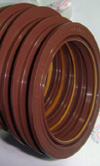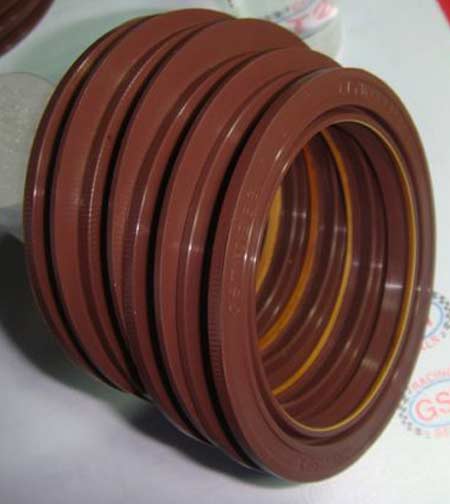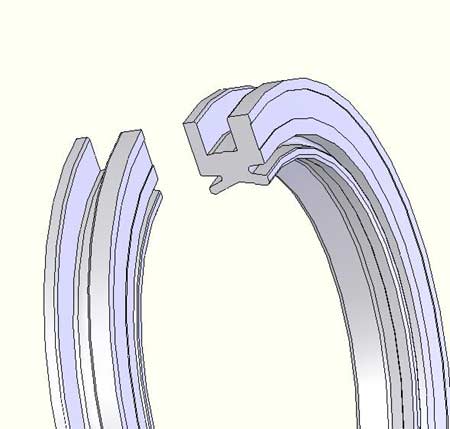The split rear main crankshaft seal
 The modern internal combustion engine is a masterpiece of engineering. Whether gasoline or diesel, intended for road or race track, the complexity under the hood can be a little awe-inspiring even to those familiar with the technologies used. So why, when we have engineering development processes like FMEA, Six-Sigma and the like, do we still build engines that after only a few short months or even days can still leak oil out of the crankshaft rear oil seal? Owners of the big-block Chevy engine, or indeed those using many other older-type
The modern internal combustion engine is a masterpiece of engineering. Whether gasoline or diesel, intended for road or race track, the complexity under the hood can be a little awe-inspiring even to those familiar with the technologies used. So why, when we have engineering development processes like FMEA, Six-Sigma and the like, do we still build engines that after only a few short months or even days can still leak oil out of the crankshaft rear oil seal? Owners of the big-block Chevy engine, or indeed those using many other older-type
engine architectures, will recognise the issue, and the tell-tale signs of the oil slick in the driveway. It may be annoying for the house-proud enthusiast but for the racer the situation is potentially much more serious.
The real problem is not necessarily the seal itself but the task it is asked to do lurking behind the engine flywheel. In attaching the flywheel to the crankshaft, the rear flange invariably has to be bigger than the main journal to avoid overstressing it. Big enough to accept the six or eight bolts clamping the assembly together, the diameter of a one-piece rear crank oil seal is of necessity therefore smaller than this flange. Consequently, to enable assembly, this rear seal historically has to be installed in two halves.
And that's where the problem starts - two semicircular 'moons', one in the block and the other in the main bearing cap, means two potential zones for leaks. While the seal itself may be (just) adequate in dynamic terms when the crankshaft is rotating, once it has stopped, oil will in time inevitably leak along the two-piece seal split zones.

However, I have recently seen one design of seal that offers a degree of hope for all big-block Chevy 'sufferers'. The new dual-lip seal uses modern fluoroelastomer technology for both seal lips, and incorporates a low-friction PTFE coating on the key contact surface. When assembled correctly, it should significantly reduce the incidence of these leaks and possibly eliminate them altogether. Conceptually the seal is designed to be split in one position only.
Since the seal is flexible it can be manipulated around the crankshaft before the crank is assembled back into the engine and the bearing housings replaced. The two edges of the seal will match up inside the recess and no leakage path should result. However, to minimise any chance of a leak, the split end of the seal is assembled into the engine so that it is uppermost and therefore less likely to see too much oil. Reducing the number of potential leak paths to only one, positioning it in a less aggravating position and using much better sealing technology will, if the seal is assembled correctly, minimise the chances of leaking and possibly provide an oil-tight solution.

A relatively recent innovation and by no means unique, early test bed running on one particular prototype seal not only appears to have solved the static oil leak problem but also, according to dyno tests, gives improved torque and a useful additional 12 bhp. While this in no way can be attributed to the PTFE coatings, the general opinion is that the increase in bmep is more likely the result of the higher crankcase vacuum created under test.
Creating an extra 12 bhp and building a leak-free Chevy for only a few extra dollars? Sounds like good value for money to me.
Fig. 1 - Big-block Chevy rear crankshaft main oil seal (Courtesy of GST Racing Seals)
Fig. 2 - CAD detail (Courtesy of GST Racing Seals)
Written by John Coxon